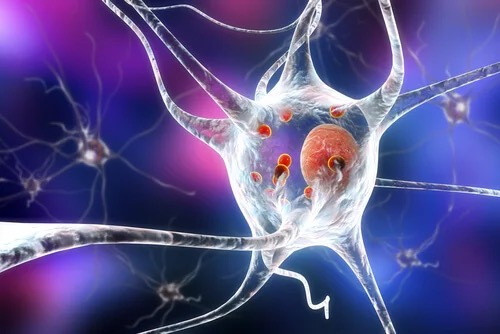Parkinson's Disease: Diagnosis and Treatments

Parkinson’s disease is the second most common neurodegenerative disease among people over 65. In fact, between two to three percent of this particular population suffers from the illness. Consequently, Parkinson’s presents a challenge for researchers. Its clinical diagnosis is based on the presence of bradykinesia (slow movement) and other motor symptoms.
However, the disease also causes other symptoms. It’s also associated with a number of non-motor symptoms. Naturally, these increase the sufferer’s overall level of disability. Therefore, research tends to focus on early detection of Parkinson’s.
Recent research regarding diagnostic biomarkers has used neuroimaging techniques for the early detection of this disease. Generally, the treatment of Parkinson’s is based on the pharmacological substitution of striatum dopamine.

Parkinson’s disease is clinically defined by the presence of bradykinesia (slow movement). In addition, at least one other cardinal motor symptom will be present. For example, stiffness or tremor at rest.
However, as well as cardinal motor symptoms, most Parkinson’s patients also experience non-motor symptoms, which adds to their suffering.
The most commonly used scale for monitoring motor disability related to Parkinson’s disease is the Unified Parkinson’s Disease Rating Scale (UPDRS).
Non-motor symptoms of Parkinson’s disease
The symptoms of Parkinson’s disease are many and varied. They include:
- Sleep-wake cycle regulation disorders.
- Cognitive impairment.
- Frontal executive dysfunction.
- A deficit in memory recovery.
- Dementia and hallucinosis.
- Mood disorders.
- Autonomic dysfunction.
- Orthostatic hypertension.
- Urogenital dysfunction.
- Constipation.
- Hyperhidrosis.
- Sensory symptoms. These are mainly hyposmia (partial reduction in sense of smell) and pain.
Non-motor symptoms become increasingly common and evident throughout the course of the disease. Indeed, they play an important role in the patient’s quality of life, and the progression of the disease in general. However, doctors sometimes misdiagnose Parkinson’s. In fact, they might sometimes confuse it with:
- Multisystem atrophy.
- Progressive supranuclear palsy.
- Corticobasal degeneration. However, this is much less commonly misdiagnosed.
Treatment for Parkinson’s disease
Dopaminergic drugs
The main cause of Parkinson’s disease is the loss of dopaminergic neurons in the substantia nigra. In turn, this leads to striatal dopamine depletion, which causes the motor symptoms of Parkinson’s disease.
For this reason, when scientists found they could replace the loss of striatal dopamine by administering the precursor amino acid L-Dopa, it was a great discovery. In fact, this happened more than 50 years ago and was an extremely important development in the treatment of Parkinson’s. However, since then, scientists have made even further advances in the understanding of the pharmacological agents that regulate nigrostriatal dopaminergic transmission.
For example, some of the dopaminergic treatments doctors use for treating Parkinson’s are:
- L-Dopa (Levodopa). In fact, doctors consider this the most valuable drug in treating Parkinson’s. Furthermore, over time, all Parkinson’s patients require treatment with this drug.
- Catechol-O methyltransferase (COMT) inhibitors. They block enzymes that break down levodopa. Therefore, they extend the activity of levodopa. In addition, this drug reduces the “wearing-off” phenomenon in fluctuating Parkinson’s patients.
- Monoamine oxidase type B (MAO-B) inhibitors. They block the enzyme that breaks down dopamine. Consequently, more dopamine is available for use by the brain.
- Dopamine agonists. They have a longer half-life than L-Dopa. Therefore, they’re particularly suitable as complementary therapies for fluctuating Parkinson’s patients.

Non-dopaminergic treatments
For motor fluctuations and Parkinson’s disease
- A-2-A adenosine receptor antagonists.
- Non-selective adenosine antagonist.
- A mixture of inhibition of sodium/calcium channels and monoamine oxidase-B activity (MAO-B).
For tremors
- Anticholinergics.
- Mixed antagonists. 5-HT2A, 5-HT2B, 5-HT2C, 5-HT1A, M1, M4, H1, α1, α2, D2, D4.
Levodopa-induced dyskinesia
- NMDA antagonists.
- Mixed antagonists. 5-HT2A, 5-HT2B, 5-HT2C, 5-HT1A, M1, M4, H1, α1, α2, D2, D4.
- Adrenergic receptor α1and agonist 5-HT1A.
- Agonists 5-HT1A and 5-HT1B combined.
- Selective partial agonist α7- nAChR.
Gait disorders, falls, and freezing of gait
- Pro Cholinergic therapy (cholinesterase inhibitors).
- Norepinephrine reuptake inhibitors.
Parkinson’s disease, like Alzheimer’s, is one of the most common diseases among the older population. In fact, the older people are, the more likely they are to suffer it. Therefore, research has focused on the early detection and treatment of the disease. Unfortunately, it seems there’s a long way to go before there’s a treatment to completely cure this disease.
Parkinson’s disease is the second most common neurodegenerative disease among people over 65. In fact, between two to three percent of this particular population suffers from the illness. Consequently, Parkinson’s presents a challenge for researchers. Its clinical diagnosis is based on the presence of bradykinesia (slow movement) and other motor symptoms.
However, the disease also causes other symptoms. It’s also associated with a number of non-motor symptoms. Naturally, these increase the sufferer’s overall level of disability. Therefore, research tends to focus on early detection of Parkinson’s.
Recent research regarding diagnostic biomarkers has used neuroimaging techniques for the early detection of this disease. Generally, the treatment of Parkinson’s is based on the pharmacological substitution of striatum dopamine.

Parkinson’s disease is clinically defined by the presence of bradykinesia (slow movement). In addition, at least one other cardinal motor symptom will be present. For example, stiffness or tremor at rest.
However, as well as cardinal motor symptoms, most Parkinson’s patients also experience non-motor symptoms, which adds to their suffering.
The most commonly used scale for monitoring motor disability related to Parkinson’s disease is the Unified Parkinson’s Disease Rating Scale (UPDRS).
Non-motor symptoms of Parkinson’s disease
The symptoms of Parkinson’s disease are many and varied. They include:
- Sleep-wake cycle regulation disorders.
- Cognitive impairment.
- Frontal executive dysfunction.
- A deficit in memory recovery.
- Dementia and hallucinosis.
- Mood disorders.
- Autonomic dysfunction.
- Orthostatic hypertension.
- Urogenital dysfunction.
- Constipation.
- Hyperhidrosis.
- Sensory symptoms. These are mainly hyposmia (partial reduction in sense of smell) and pain.
Non-motor symptoms become increasingly common and evident throughout the course of the disease. Indeed, they play an important role in the patient’s quality of life, and the progression of the disease in general. However, doctors sometimes misdiagnose Parkinson’s. In fact, they might sometimes confuse it with:
- Multisystem atrophy.
- Progressive supranuclear palsy.
- Corticobasal degeneration. However, this is much less commonly misdiagnosed.
Treatment for Parkinson’s disease
Dopaminergic drugs
The main cause of Parkinson’s disease is the loss of dopaminergic neurons in the substantia nigra. In turn, this leads to striatal dopamine depletion, which causes the motor symptoms of Parkinson’s disease.
For this reason, when scientists found they could replace the loss of striatal dopamine by administering the precursor amino acid L-Dopa, it was a great discovery. In fact, this happened more than 50 years ago and was an extremely important development in the treatment of Parkinson’s. However, since then, scientists have made even further advances in the understanding of the pharmacological agents that regulate nigrostriatal dopaminergic transmission.
For example, some of the dopaminergic treatments doctors use for treating Parkinson’s are:
- L-Dopa (Levodopa). In fact, doctors consider this the most valuable drug in treating Parkinson’s. Furthermore, over time, all Parkinson’s patients require treatment with this drug.
- Catechol-O methyltransferase (COMT) inhibitors. They block enzymes that break down levodopa. Therefore, they extend the activity of levodopa. In addition, this drug reduces the “wearing-off” phenomenon in fluctuating Parkinson’s patients.
- Monoamine oxidase type B (MAO-B) inhibitors. They block the enzyme that breaks down dopamine. Consequently, more dopamine is available for use by the brain.
- Dopamine agonists. They have a longer half-life than L-Dopa. Therefore, they’re particularly suitable as complementary therapies for fluctuating Parkinson’s patients.

Non-dopaminergic treatments
For motor fluctuations and Parkinson’s disease
- A-2-A adenosine receptor antagonists.
- Non-selective adenosine antagonist.
- A mixture of inhibition of sodium/calcium channels and monoamine oxidase-B activity (MAO-B).
For tremors
- Anticholinergics.
- Mixed antagonists. 5-HT2A, 5-HT2B, 5-HT2C, 5-HT1A, M1, M4, H1, α1, α2, D2, D4.
Levodopa-induced dyskinesia
- NMDA antagonists.
- Mixed antagonists. 5-HT2A, 5-HT2B, 5-HT2C, 5-HT1A, M1, M4, H1, α1, α2, D2, D4.
- Adrenergic receptor α1and agonist 5-HT1A.
- Agonists 5-HT1A and 5-HT1B combined.
- Selective partial agonist α7- nAChR.
Gait disorders, falls, and freezing of gait
- Pro Cholinergic therapy (cholinesterase inhibitors).
- Norepinephrine reuptake inhibitors.
Parkinson’s disease, like Alzheimer’s, is one of the most common diseases among the older population. In fact, the older people are, the more likely they are to suffer it. Therefore, research has focused on the early detection and treatment of the disease. Unfortunately, it seems there’s a long way to go before there’s a treatment to completely cure this disease.
All cited sources were thoroughly reviewed by our team to ensure their quality, reliability, currency, and validity. The bibliography of this article was considered reliable and of academic or scientific accuracy.
-
Poewe, W., Seppi, K., Tanner, C. M., Halliday, G. M., Brundin, P., Volkmann, J., … & Lang, A. E. (2017). Parkinson disease. Nature reviews Disease primers, 3, 17013.
-
PD Med Collaborative Group. (2014). Long-term effectiveness of dopamine agonists and monoamine oxidase B inhibitors compared with levodopa as initial treatment for Parkinson’s disease (PD MED): a large, open-label, pragmatic randomised trial. The Lancet, 384(9949), 1196-1205.
-
LeWitt, P. A., & Fahn, S. (2016). Levodopa therapy for Parkinson disease: a look backward and forward. Neurology, 86(14 Supplement 1), S3-S12.
This text is provided for informational purposes only and does not replace consultation with a professional. If in doubt, consult your specialist.







